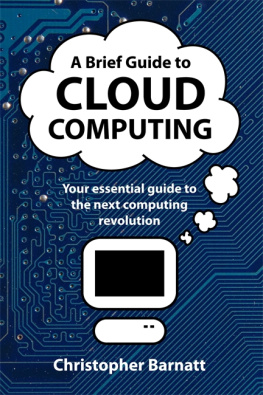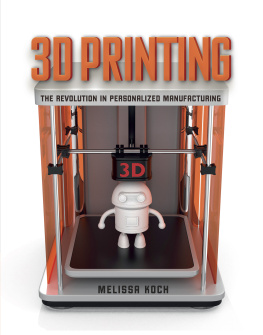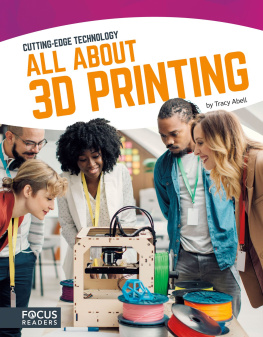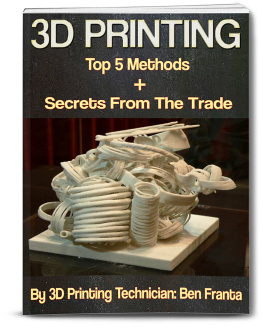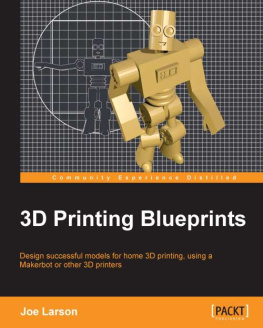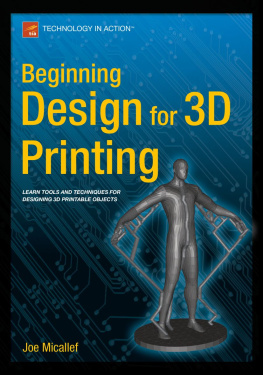Barnatt - The Next Big Thing: From 3D Printing to Mining the Moon
Here you can read online Barnatt - The Next Big Thing: From 3D Printing to Mining the Moon full text of the book (entire story) in english for free. Download pdf and epub, get meaning, cover and reviews about this ebook. year: 2015, publisher: ExplainingTheFuture.com, genre: Romance novel. Description of the work, (preface) as well as reviews are available. Best literature library LitArk.com created for fans of good reading and offers a wide selection of genres:
Romance novel
Science fiction
Adventure
Detective
Science
History
Home and family
Prose
Art
Politics
Computer
Non-fiction
Religion
Business
Children
Humor
Choose a favorite category and find really read worthwhile books. Enjoy immersion in the world of imagination, feel the emotions of the characters or learn something new for yourself, make an fascinating discovery.

- Book:The Next Big Thing: From 3D Printing to Mining the Moon
- Author:
- Publisher:ExplainingTheFuture.com
- Genre:
- Year:2015
- Rating:5 / 5
- Favourites:Add to favourites
- Your mark:
- 100
- 1
- 2
- 3
- 4
- 5
The Next Big Thing: From 3D Printing to Mining the Moon: summary, description and annotation
We offer to read an annotation, description, summary or preface (depends on what the author of the book "The Next Big Thing: From 3D Printing to Mining the Moon" wrote himself). If you haven't found the necessary information about the book — write in the comments, we will try to find it.
Barnatt: author's other books
Who wrote The Next Big Thing: From 3D Printing to Mining the Moon? Find out the surname, the name of the author of the book and a list of all author's works by series.
The Next Big Thing: From 3D Printing to Mining the Moon — read online for free the complete book (whole text) full work
Below is the text of the book, divided by pages. System saving the place of the last page read, allows you to conveniently read the book "The Next Big Thing: From 3D Printing to Mining the Moon" online for free, without having to search again every time where you left off. Put a bookmark, and you can go to the page where you finished reading at any time.
Font size:
Interval:
Bookmark:
The Next Big THing
From 3D Printing to Mining the Moon
Christopher Barnatt
ExplainingTheFuture.com
First published by ExplainingTheFuture.com
Copyright Christopher Barnatt 2015.
The right of Christopher Barnatt to be identified as the author of this work has been asserted by him in accordance with the Copyright, Designs and Patents Act 1988.
Disclaimer
While every effort has been made to ensure that the content in this book is as accurate as possible, no warranty or fitness is implied. All trademarks included in this book are appropriately capitalized and no attempt is made or implied to supersede the rights of their respective owners.
CONTENTS
Prologue: Beyond the Internet
In 1995 I published a book called Cyber Business that predicted the birth of e-commerce and social media. Since that time I have frequently been quizzed about future online trends, and have introduced many individuals and organizations to key developments like cloud computing. Even so, when people now ask me about the world of tomorrow, I often begin by stating that the Internet Revolution has come to an end.
The mainstreaming of the Internet in the closing years of the 20th century was undoubtedly a seminal moment in human history. Nevertheless, no period of revolution can go on indefinitely. Look back 375 million years, and our ancestors were dragging themselves out of the oceans and developing a technology called lungs in what we could term the Breathing Air Revolution. To this day, lungs remain critical to the survival of all mammals. And yet the Breathing Air Revolution has clearly long since ended.
In a similar fashion, now that the Internet has become established as our collective, planetary nervous system, so the idea of the Internet Revolution ought rapidly to be consigned to history. Granted, the online world will continue to incrementally evolve. But those seeking radical, future shaping innovation really need to divert their attention away from the cyber world to which we increasingly retreat.
While our civilization is now reliant on the Internet, we are even more dependent on the sustainable production of physical things. We therefore need to shift our collective focus away from the digital world, and toward the innovation of radical new manufacturing methods and the attainment of fresh resource supplies. If only to ensure our civilizations long-term survival, it is now time for the human race and the worlds stock markets to recover from Internet fever in preparation for the Next Big Thing.
The following chapters extrapolate from bleeding-edge science and engineering to predict ten dominant technologies and related undertakings of the 2020s, 2030s, 2040s and beyond. In doing so, the four parts of this book additionally highlight four fundamental future transitions. These will take us on a journey from the reign of the microprocessor to that of the microfabricator; from a use of dumb computing devices to a cohabitation with smart synthetic citizens; from consuming less here on the Earth to finding more resources out in space; and from healthcare systems focused on medical maintenance to those which champion generational upgrades of the human form.
While each of the ten Next Big Things that will underpin the above transitions could develop and be studied in isolation, it is my contention that they are all highly interrelated. Understanding these interrelations is also quite important. So, before we get to chapter 1 and to provide some explanation of the last paragraph! here is a brief overview of things to come.
LOCAL DIGITAL MANUFACTURING
The current model of industrial production works roughly like this. Somebody dreams up a new product, a factory thousands of miles from most potential customers is tooled up to produce it, and a large number of identical products are manufactured in the hope that somebody, someday will want to buy them. The products are then transported to a warehouse, from where they are gradually shipped to wholesalers and retailers for potential sale.
In time, many products are sold, although about one-seventh of the resultant revenues are spent on transportation, warehousing and related logistics services. Unfortunately, some of the products that are manufactured are never actually bought by anybody, and need to be discarded. This highly wasteful, globalized, mass production arrangement works because there are enough relatively cheap natural resources still available for companies to be able to squander a great deal and still make a profit. But as resources become less plentiful and energy prices rise, so how most things are made will have to change. And this is when we will transition to local digital manufacturing.
As detailed across Part I of this book, local digital manufacturing (LDM) uses digital technologies to make products on demand very close to where final consumers actually live. Using future LDM hardware, designs for both inorganic and organic products will be able to be stored and transported digitally, before being locally materialized into a physical format one layer, cell or molecule at a time.
Right now, as we shall explore in chapter 1, the most developed LDM technology is 3D printing. This builds objects in layers, and even today can fabricate items in plastics, metals, ceramics, foodstuffs and living cells. Already jewelry, car bodies, toys, aerospace components, medical devices, works of art and buildings have been 3D printed. Using an organic 3D printing variant called bioprinting, living human tissue has also already been manufactured one layer at a time. Of all the Next Big Things detailed in this book, 3D printing may well be the first to enter the mainstream. Though when it comes to local digital manufacturing, 3D printing will be just the tip of the iceberg.
In addition to 3D printing, there is already another highly versatile technology that can turn digital designs into complex physical things in pretty much any location. This amazing technology is life itself, with the DNA of all plants and animals containing a robust digital code that can tell cells how to reproduce, rearrange and subsequently function. So what if we could turn living biology into a construction kit that could be digitally programmed as a production technology? Well, we have already started to do this with the creation of a new science called synthetic biology.
As we shall see in chapter 2, synthetic biology allows living things to be created that have never existed in nature. Already synthetic biology is being applied to develop micro-organisms that can ferment organic feedstocks into biofuels, bioplastics, bioacrylics and pharmaceuticals. In time, synthetic biology even has the potential to create new plants and novel animals for specific manufacturing purposes. Consumables for 3D printers, for example, may one day be grown locally in desktop hydroponic devices or urban vertical farms.
As well as relying on 3D printing and synthetic biology, LDM will be facilitated by next generation nanotechnologies. As we will investigate in chapter 4, so-termed atomically precise manufacturing (APM) will permit objects to be fabricated on a molecular scale using a process called self-assembly. Over the next two decades, we are also likely to witness the convergence of nanotechnology with 3D printing and synthetic biology. In turn, this will facilitate the construction of microfabricators that will be able to fashion a very wide range of highly sophisticated products directly from digital designs.
Even today there is an overlap between 3D printing, synthetic biology and nanotechnology, with scientists and engineers in each discipline increasingly sharing knowledge and techniques as they learn to digitally manipulate matter on a very small scale. For example, nanoscale 3D printing processes are starting to be developed that can allow material composition as well as material placement to be digitally controlled. Add in synthetic biology, and future microfabricators should be able to control the composition, placement and living behaviour of digitally manufactured things. As I said a few paragraphs back, 3D printing will be just the start of the local digital manufacturing revolution.
Font size:
Interval:
Bookmark:
Similar books «The Next Big Thing: From 3D Printing to Mining the Moon»
Look at similar books to The Next Big Thing: From 3D Printing to Mining the Moon. We have selected literature similar in name and meaning in the hope of providing readers with more options to find new, interesting, not yet read works.
Discussion, reviews of the book The Next Big Thing: From 3D Printing to Mining the Moon and just readers' own opinions. Leave your comments, write what you think about the work, its meaning or the main characters. Specify what exactly you liked and what you didn't like, and why you think so.


